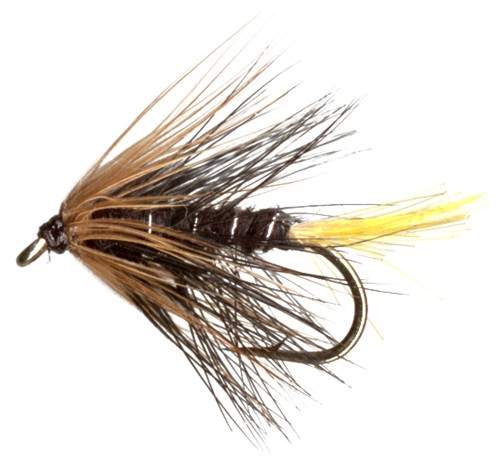Seatrout and Trout Flies: 2
 When using trout flies for seatrout fishing, it’s worth remembering that, just like the salmon, seatrout reputedly does not feed in fresh water. Allegedly the prime motivator to return from the sea is the instinct to spawn rather than any desire to feed. For the forensically-minded among you, autopsies done on seatrout reveal very little in the stomach in the way of food, apart perhaps from the odd insect. There is little or no evidence of the intense feeding you would find in a brown or rainbow trout. This finding endorses the hypothesis of non feeding, although quite a large proportion of school seatrout do not spawn on their initial visit back to fresh water. Indeed, it is the belief that these first-timers will in fact feed.
When using trout flies for seatrout fishing, it’s worth remembering that, just like the salmon, seatrout reputedly does not feed in fresh water. Allegedly the prime motivator to return from the sea is the instinct to spawn rather than any desire to feed. For the forensically-minded among you, autopsies done on seatrout reveal very little in the stomach in the way of food, apart perhaps from the odd insect. There is little or no evidence of the intense feeding you would find in a brown or rainbow trout. This finding endorses the hypothesis of non feeding, although quite a large proportion of school seatrout do not spawn on their initial visit back to fresh water. Indeed, it is the belief that these first-timers will in fact feed.
You can catch seatrout on most types of fly, whether it be dry fly, wet fly, streamers or bucktails. Incidentally, salmon flies will also take seatrout. In times past all seatrout flies were either scaled-up trout flies or scaled-down salmon. Some modern flies, though, are designed exclusively for seatrout, to catch the fish in their various taking moods. Broadly speaking the flies or lures needed to take seatrout will be larger versions of wet flies; floating, wake-forming surface lures; sub-surface lures; and dapping flies.
There can be no doubt whatever that taking seatrout requires a particular set of skills, especially if you do not know what stage they are at in their trip from sea to spawning ground. Making the best use of most trout flies, under the most appropriate conditions, is close to an artform when it comes to the mercurial seatrout.



















